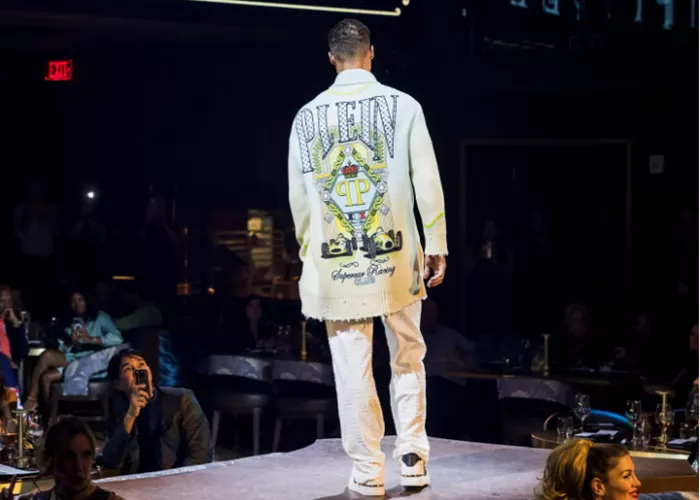Miami Fashion Week (MIAFW), which took place from November 18 to 23, stood out for its unique fusion of local talent, Latin American creativity, and global design icons. Under the leadership of Executive Director Lourdes Fernandez-Velasco, who has guided the event since 2016, MIAFW has become a cultural and fashion hub that reflects Miami’s eclectic, vibrant spirit.
“Miami is the melting pot of the Americas, and Miami Fashion Week embodies that,” Fernandez-Velasco explained. This year’s event featured a diverse lineup of designers, including Latin American talents and renowned international names like Philipp Plein, Lafayette 148 NY, Agatha Ruiz de la Prada, and local favorites such as Yas Gonzalez and Shantall Lacayo. The mix celebrated Miami’s cultural diversity while offering a global platform for its distinct voice in fashion.
Since its inception in 1998, MIAFW has evolved into a globally recognized event. After Fernandez-Velasco took over in 2016, her focus was on expanding its international presence while rebuilding the community aspect that had been lost. “We aimed to raise awareness and capture global attention,” she said. “Miami’s unique perspective complements New York, and we’ve worked with the CFDA to position ourselves as a complement, not a competitor.”
A key milestone came when MIAFW was added to the CFDA’s official calendar, marking a significant step in its growth. “Fashion in Miami is fragmented, like the city itself,” Fernandez-Velasco noted. “But we’ve become the nucleus that brings it all together.” Since then, the event has worked tirelessly to strengthen Miami’s fashion community.
The week kicked off with Philipp Plein’s electrifying Spring/Summer 2025 runway show, which blended high-fashion streetwear with luxury. Plein’s bold collection featured vibrant, statement pieces that emphasized individuality and self-expression. The show was followed by an exclusive designer dinner, further cementing Miami’s position as a creative hub.
Other highlights included runway shows by Gianinna Azar, Claro Couture, SIGAL, and Yenny Bastida, with many of the shows taking place at the Gary Nader Art Center. MIAFW also hosted its signature Summit at Miami Dade College, where discussions focused on the future of fashion and sustainability.
MIAFW’s inclusivity was evident in a unique partnership between Miami’s Reserve Padel and AMI Paris. From November 15 to 30, Reserve’s club in the Design District became a showcase for AMI-branded padel gear and a pop-up for the brand’s Fall/Winter 2024 collection, blending sport with Parisian elegance.
What sets MIAFW apart from other fashion weeks is its direct-to-consumer approach. “The Miami market is about seeing it and buying it,” Fernandez-Velasco said. This immediacy resonates with the city’s luxury lifestyle and diverse fashion scene. The event provides a platform for both emerging designers and global brands, reflecting Miami’s mix of aspirational yet accessible fashion.
The focus on sustainability was another key aspect of this year’s event. The Summit featured expert panels on topics like “Fashion Forward: Rethinking Fashion for a Sustainable Future” and “Threads of Tradition: Merging Heritage and Sustainability in Modern Fashion.” Speakers included sustainability leaders like Vanessa Sanchez, Yadira Díaz, and Taryn Hipwell, as well as cultural experts like Magali Mendez and Yenny Bastida.
“We need to be inclusive of all the diverse pockets of Miami’s fashion scene,” Fernandez-Velasco said. The event’s diverse lineup—from high couture to eco-conscious designs—embodied Miami’s spirit of inclusivity. “Fashion in Miami is spread out, but we’re bringing it together,” she explained, noting that local government and institutions are starting to see fashion as an economic driver for the city.
As MIAFW looks to the future, Fernandez-Velasco envisions a continued focus on Miami-based designers and sustainability. “Sustainability will continue to grow, and we’re planning an annual sustainability summit to keep the conversation going,” she said. Partnerships with Miami-Dade County and local schools aim to nurture the city’s fashion talent, positioning MIAFW as a catalyst for the city’s fashion industry.
Looking ahead to 2025, Fernandez-Velasco is optimistic about MIAFW’s continued evolution. “We’re working hard to ensure Miami has a fashion week that truly reflects its unique identity,” she concluded.
Miami Fashion Week continues to shine as a global crossroads for fashion, culture, and community, defining the South Beach aesthetic while elevating Miami’s presence on the global fashion stage.
Related topics:
- HANHGAI TANG Marks 30 Years with Stunning Everyday Essentials
- Jennifer Lopez Dons Casual White Shirt and Jeans for Thanksgiving Eve Celebration
- Filipinos Turn to Secondhand Fashion for Savings and Sustainability

